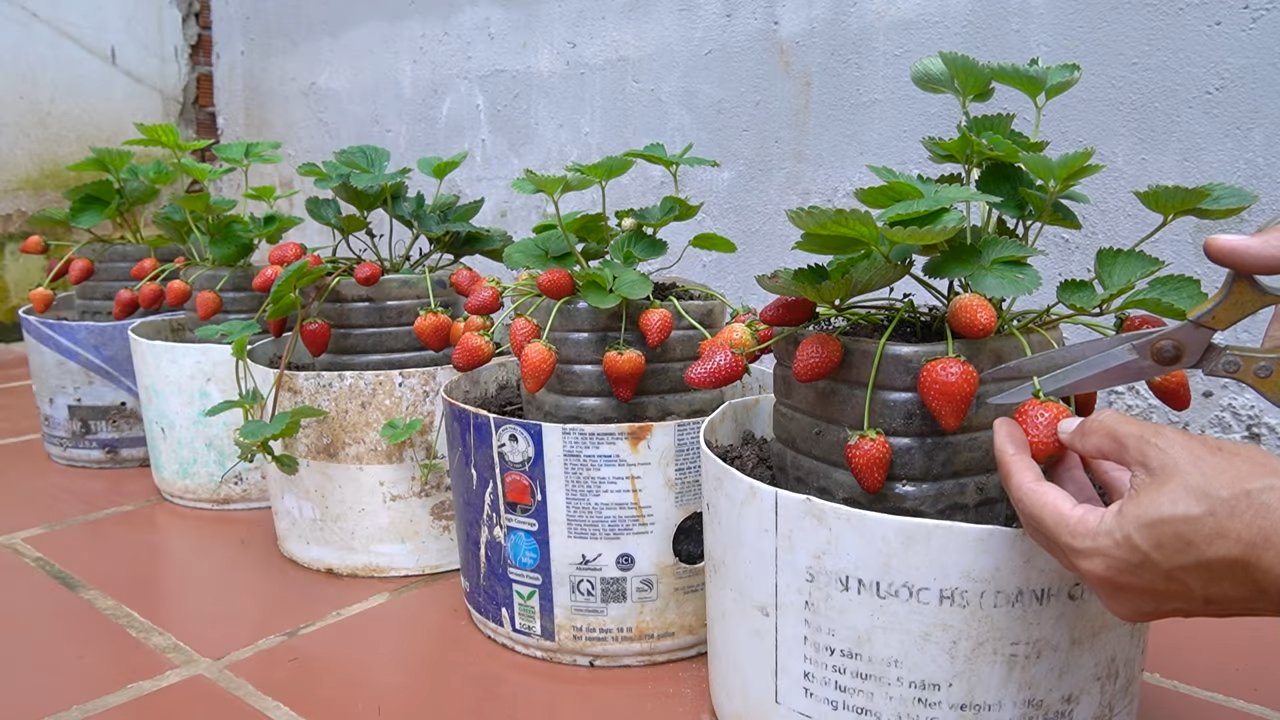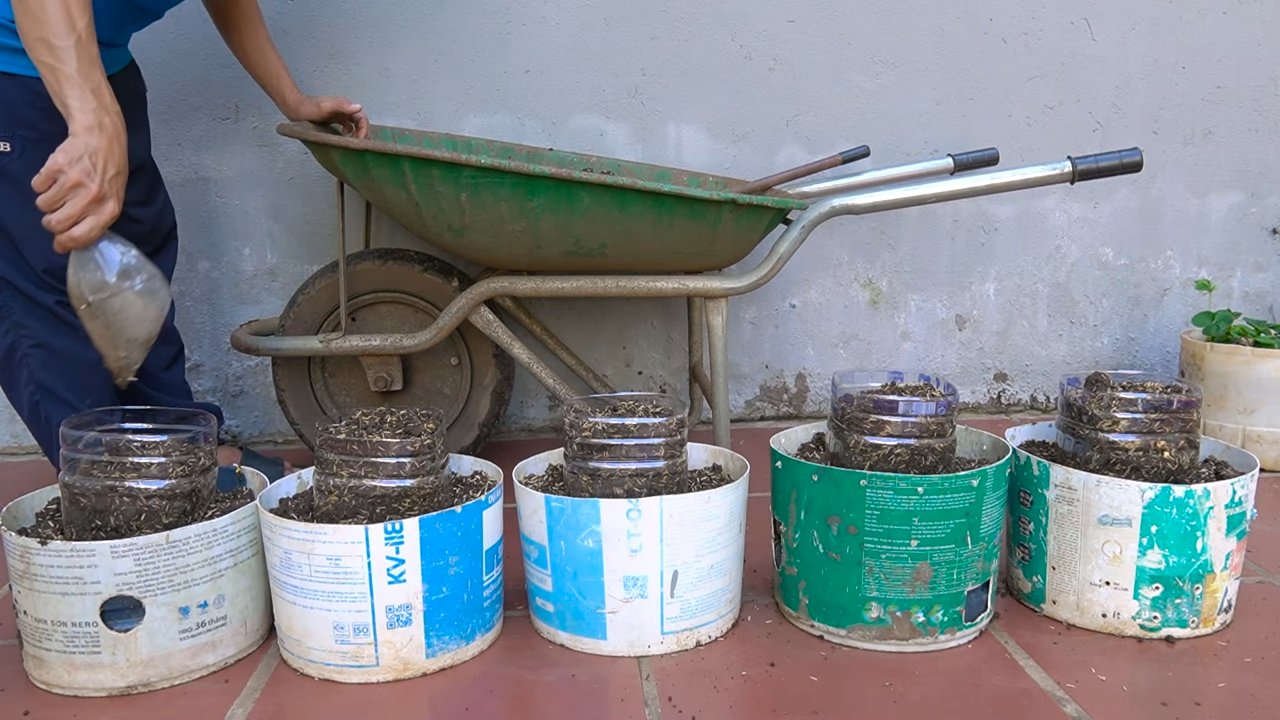Grow ginger at home? Absolutely! Imagine the satisfaction of snipping off a piece of fresh, zesty ginger root right from your own backyard (or even your kitchen windowsill!) whenever you need it. Forget those sad, shriveled pieces at the grocery store – we’re talking vibrant, flavorful ginger, grown with your own two hands.
Ginger, with its fiery kick and incredible health benefits, has been cultivated for thousands of years. Originating in South Asia, it quickly spread across the globe, becoming a staple in cuisines and traditional medicine from India to China and beyond. For centuries, it’s been prized not only for its culinary uses but also for its medicinal properties, believed to aid digestion, reduce inflammation, and even boost immunity.
But why should you learn to grow ginger at home? Well, for starters, it’s incredibly rewarding! Plus, store-bought ginger can sometimes be expensive and lack the intense flavor of homegrown varieties. More importantly, knowing exactly where your food comes from and how it’s grown gives you peace of mind. In this DIY guide, I’ll walk you through the simple steps to cultivate your own thriving ginger plant, regardless of your gardening experience. Get ready to unlock the secrets to a bountiful ginger harvest – it’s easier than you think!

Growing Ginger at Home: Your DIY Guide for a Bountiful Harvest
Hey gardening friends! Have you ever wondered how you can easily grow the spicy, healthy ginger you love all by yourself? I’ll show you how! It’s easier than you think, and you’ll be rewarded with fresh ginger whenever you need it. Let’s get started!
What You Need: The Ingredients for Your Ginger Success
Before we begin, here is a list of things you’ll need. Don’t worry, you probably have most of them at home already!
- A piece of ginger root (rhizome): Choose a plump, healthy-looking piece with well-developed buds (those little “eyes” from which the shoots grow). It’s best to use organic ginger, as conventionally grown ginger is sometimes treated with growth inhibitors.
- A planter: Choose a pot that is at least 30 cm (12 inches) wide and 20 cm (8 inches) deep. Ginger needs space to spread out.
- High-quality potting soil: A well-draining mix is crucial. I recommend a mixture of potting soil, compost, and perlite or vermiculite.
- Water: Clear, clean water for watering.
- A sunny spot: Ginger loves warmth and indirect sunlight.
- Optional: Organic fertilizer or compost tea for additional growth.
Step-by-Step Guide: How to Plant Your Ginger
Now that we have everything, we can start planting!
- Prepare the ginger root:
- If your piece of ginger is very large, you can cut it into smaller pieces. Make sure each piece has at least one or two buds.
- Let the cut surfaces air dry for a few days before planting. This helps prevent rot.
- Prepare the pot:
- Fill the pot with your potting soil mix. Leave about 5 cm (2 inches) of space at the top.
- Lightly moisten the soil. It should be damp, but not waterlogged.
- Plant the ginger:
- Place the ginger pieces on the soil with the buds facing up.
- Cover the ginger pieces with about 2-5 cm (1-2 inches) of soil.
- Gently press the soil down.
- Water and choose a location:
- Water the ginger carefully until the soil is moist. Avoid waterlogging.
- Place the pot in a warm, bright place with indirect sunlight. An east or west-facing window is ideal. Direct midday sun can burn the leaves.
The Care: How to Make Your Ginger Grow
After planting, proper care is crucial for a bountiful harvest.
- Watering:
- Water the ginger regularly, but avoid waterlogging. The soil should always be slightly moist.
- Check the soil’s moisture by sticking your finger about 2 cm (1 inch) deep into the soil. If it feels dry, it’s time to water.
- In winter, when growth is slower, you’ll need to water less.
- Fertilizing:
- Fertilize the ginger every few weeks with an organic fertilizer or compost tea. This promotes the growth and health of the plant.
- I like to use diluted fish fertilizer or compost tea.
- Temperature and Humidity:
- Ginger loves warmth. The ideal temperature is between 20 and 30 degrees Celsius (68-86°F).
- Keep the humidity high by regularly spraying the leaves with water or placing the pot on a tray filled with pebbles and water.
- Repotting (optional):
- If your ginger becomes too large for its pot, you can transplant it into a larger one.
- Choose a pot that is at least 5 cm (2 inches) larger than the previous one.
- Repotting is best done in the spring.
The Harvest: When and How to Harvest Your Ginger
The most important part: When is the ginger ready to harvest? And what’s the best way to do it?
- When to harvest:
- You can harvest ginger about 8-10 months after planting.
- The leaves will turn yellow and begin to wilt when the ginger is mature.
- You can also harvest small amounts earlier by carefully cutting off a piece of the root.
- How to harvest:
- Water the ginger well before harvesting.
- Dig up the entire plant or carefully tip the pot over.
- Shake the soil off the roots.
- Cut off the amount of ginger you need.
- You can leave the rest of the ginger in the pot and replant it to continue growing.
- Storage:
- Freshly harvested ginger can be stored in an airtight container in the refrigerator for up to three weeks.
- You can also freeze ginger. Peel it and slice or grate it before freezing.
- Dried ginger lasts even longer.
Common Problems and Solutions: What to Do When Something Goes Wrong
Even with ginger cultivation, problems can arise. Here are some common issues and how to fix them:
- Yellow leaves:
- Cause: Overwatering, nutrient deficiency, or too much direct sun.
- Solution: Adjust your watering schedule, fertilize the ginger, and move it to a location with indirect sunlight.
- Rot:
- Cause: Waterlogging or poor ventilation.
- Solution: Ensure good drainage and avoid overwatering. Remove any affected parts of the root.
- Pests:
- Cause: Aphids, spider mites, or other pests.
- Solution: Spray the leaves with a mixture of water and neem oil or use an organic insecticide.
Additional Tips and Tricks: How to Maximize Your Ginger Harvest
Here are a few more tips to help you get an even larger and healthier ginger harvest:
- Use rainwater: Rainwater is softer than tap water and contains no chemicals that could hinder the ginger’s growth.
- Mulch: Mulch the soil around the ginger with organic material like straw or leaves. This helps retain moisture and suppress weeds.
- Rotate the pot: Turn the pot regularly so the ginger gets even light.
- Be patient: Ginger takes time to grow. Be patient and give it the right care, and you will be rewarded with a bountiful harvest.
Ginger in the Kitchen: Versatile Uses
Freshly harvested ginger is incredibly versatile and can be used in a variety of dishes. Here are some of my favorite applications:
Marinades: Ginger is a great ingredient for marinades for meat, fish, or tofu.
Ginger tea: A classic! Simply add a few slices of fresh ginger to hot water and let it steep.
Curries: Ginger is an essential ingredient in many curries.
Soups: Ginger adds a spicy note to soups.
Smoothies: A small piece of ginger in your smoothie provides a healthy kick.

Conclusion
So, there you have it! Growing ginger at home is not only achievable, but it’s also a rewarding and surprisingly simple process. Forget those expensive trips to the grocery store for a knob of fresh ginger – imagine the satisfaction of harvesting your own supply, bursting with flavor and ready to elevate your culinary creations. This DIY trick is a must-try for anyone who appreciates fresh ingredients, enjoys a touch of gardening, or simply wants to add a sustainable element to their kitchen.
Think about the possibilities! You can experiment with different varieties of ginger, each offering a unique flavor profile. Try growing the common ginger (Zingiber officinale) for its classic spicy kick, or venture into the world of ornamental gingers for their stunning foliage and fragrant blooms. You can even adapt the growing method to suit your space – whether you have a sprawling garden or just a sunny windowsill, there’s a way to cultivate your own ginger.
Beyond the convenience and cost savings, growing your own ginger allows you to control the growing conditions and ensure that your ginger is free from harmful pesticides and chemicals. You’ll be enjoying the purest, most flavorful ginger possible. Plus, the process of nurturing a plant from rhizome to harvest is incredibly therapeutic and connects you to the natural world in a meaningful way.
Don’t be intimidated by the thought of gardening – this is a project that’s perfect for beginners. With just a few simple steps and a little patience, you’ll be well on your way to enjoying a bountiful harvest of fresh, homegrown ginger.
We wholeheartedly encourage you to give this DIY trick a try. Start small, experiment with different techniques, and most importantly, have fun! Once you’ve experienced the joy of harvesting your own ginger, you’ll never look at store-bought ginger the same way again.
And remember, the journey doesn’t end with the harvest. Share your experiences with us! We’d love to hear about your successes, your challenges, and any creative variations you’ve discovered along the way. Post pictures of your ginger plants, share your favorite recipes using your homegrown ginger, and let’s build a community of ginger-growing enthusiasts. Let’s all learn together how to best **grow ginger at home**.
Ready to embark on your ginger-growing adventure?
Don’t delay! Gather your supplies, follow the steps outlined in this article, and get ready to experience the satisfaction of growing your own fresh ginger. You won’t regret it!
FAQ
Q: What kind of ginger should I use to start growing?
A: You should use fresh ginger rhizomes from a grocery store or nursery. Look for rhizomes that are plump, firm, and have visible “eyes” or buds. Organic ginger is often recommended, as it’s less likely to have been treated with growth inhibitors. Avoid using dried or powdered ginger, as it won’t sprout.
Q: How long does it take to grow ginger at home?
A: It typically takes around 8-10 months from planting to harvest. However, you can start harvesting small pieces of ginger after about 4 months, allowing the plant to continue growing. The exact time will depend on your climate, growing conditions, and the variety of ginger you’re growing.
Q: What kind of soil is best for growing ginger?
A: Ginger prefers well-draining, nutrient-rich soil. A mix of potting soil, compost, and perlite or vermiculite is ideal. The soil should be slightly acidic to neutral (pH 6.0-7.0). Good drainage is crucial to prevent root rot.
Q: How much sunlight does ginger need?
A: Ginger thrives in partial shade. Direct sunlight can scorch the leaves. A location that receives morning sun and afternoon shade is ideal. If you’re growing ginger indoors, place it near a bright window but away from direct sunlight.
Q: How often should I water my ginger plant?
A: Water regularly, keeping the soil consistently moist but not waterlogged. Allow the top inch of soil to dry out slightly between waterings. Reduce watering during the winter months when the plant is dormant. Overwatering can lead to root rot.
Q: What are some common problems when growing ginger, and how can I prevent them?
A: The most common problems are root rot, pests, and nutrient deficiencies.
* Root rot: Prevent this by using well-draining soil and avoiding overwatering.
* Pests: Keep an eye out for aphids, spider mites, and other common garden pests. Treat infestations with insecticidal soap or neem oil.
* Nutrient deficiencies: Fertilize regularly with a balanced organic fertilizer to provide the necessary nutrients.
Q: Can I grow ginger in a container?
A: Yes, ginger grows very well in containers. Choose a pot that is at least 12 inches deep and wide to allow the rhizomes to spread. Ensure the container has drainage holes. Container growing is a great option for those with limited space or colder climates.
Q: How do I harvest ginger?
A: To harvest ginger, gently dig around the plant and lift the rhizomes from the soil. You can harvest the entire plant or just take a few pieces, leaving the rest to continue growing. Wash the harvested ginger and store it in the refrigerator or freezer.
Q: How do I store harvested ginger?
A: Freshly harvested ginger can be stored in the refrigerator for several weeks. Wrap it in a paper towel and place it in a plastic bag to prevent it from drying out. For longer storage, you can freeze ginger. Peel and chop the ginger into smaller pieces, then freeze them in a single layer on a baking sheet. Once frozen, transfer the pieces to a freezer bag. You can also grate the ginger before freezing it.
Q: Can I grow ginger indoors year-round?
A: Yes, you can grow ginger indoors year-round, especially in colder climates. Provide adequate light, humidity, and warmth. You may need to supplement with artificial light during the winter months.
Q: What are some creative ways to use homegrown ginger?
A: The possibilities are endless! Use it in stir-fries, soups, teas, smoothies, baked goods, and marinades. You can also pickle it, candy it, or make ginger syrup. Experiment with different recipes and find your favorite ways to enjoy the fresh, vibrant flavor of your homegrown ginger.
Q: Is it possible to grow ginger from store-bought ginger that has already started to sprout?
A: Absolutely! In fact, this is a great way to get started. If you notice your store-bought ginger developing green shoots, it’s a sign that it’s ready to be planted. Just follow the same planting instructions as you would for a dormant rhizome.
Q: How can I increase the humidity around my ginger plant, especially when growing indoors?
A: Ginger thrives in humid environments. Here are a few ways to increase humidity:
* Mist the plant regularly: Use a spray bottle to mist the leaves with water.
* Place the pot on a pebble tray: Fill a tray with pebbles and water, and place the pot on top. As the water evaporates, it will increase the humidity around the plant.
* Use a humidifier: If you live in a dry climate, consider using a humidifier to increase the overall humidity in the room.
* Group plants together: Grouping plants together can help create a more humid microclimate.
Q: What kind of fertilizer should I use for my ginger plant?
A: A balanced organic fertilizer is best for ginger. Look for a fertilizer with an NPK ratio of around 10-10-10 or 14-14-14. You can also use compost tea or fish emulsion as a natural fertilizer. Fertilize every 2-4 weeks during the growing season.
Q: My ginger plant’s leaves are turning yellow. What could be the problem?
A: Yellowing leaves can be a sign of several problems, including:
* Overwatering: Make sure the soil is well-draining and avoid overwatering.
* Nutrient deficiency: Fertilize the plant with a balanced organic fertilizer.
* Pest infestation: Check the plant for pests and treat accordingly.
* Sunburn: If the plant is getting too much direct sunlight, move it to a shadier location.
By addressing these potential issues, you can help your ginger plant recover and thrive.





Leave a Comment